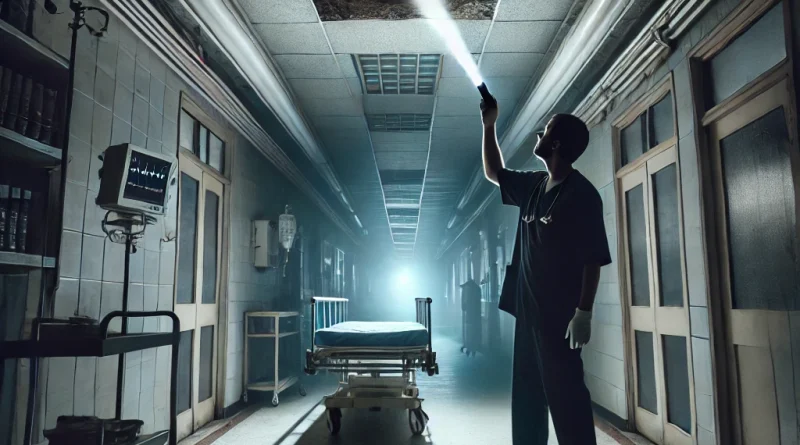The Perplexing Unexplained Mystery of Teteteke Gqontsi’s Death
The tragic and baffling story of Teteteke Gqontsi has haunted the Stellenbosch community and captivated public imagination since 2017. Gqontsi, a 61-year-old man, underwent routine abdominal surgery at Stellenbosch Hospital in South Africa—a procedure that marked the beginning of one of the most perplexing mysteries in recent history. What began as a routine recovery in a hospital bed culminated in an inexplicable disappearance and the discovery of his lifeless body in the hospital ceiling nearly two weeks later. How a patient with limited mobility after surgery could end up in such a location remains unanswered, leaving both his family and the public with troubling questions about the circumstances of his death.
A Routine Surgery Takes a Dark Turn
Teteteke Gqontsi’s surgery was considered uneventful, and he was in recovery under the care of hospital staff. According to reports, his attending nurse briefly left the room to fetch clean linen, only to return and find that he had vanished. Despite immediate searches by hospital personnel, Gqontsi’s whereabouts remained a mystery. His disappearance sparked confusion and concern, with no immediate signs of how he could have left the ward, let alone the hospital premises.
For 13 agonizing days, his family and hospital staff searched for answers. The mystery deepened when renovation workers eventually discovered Gqontsi’s body in an isolated area of the hospital’s ceiling. The circumstances were as shocking as they were inexplicable. Gqontsi, recovering from abdominal surgery, was in no condition to move unaided, let alone climb into a ceiling space.
Unanswered Questions and Theories
The discovery of Gqontsi’s body raised a slew of troubling questions. How could a man in his condition end up in such an inaccessible location? Why did it take nearly two weeks to locate him, despite extensive searches? Theories ranged from negligence on the part of hospital staff to more sinister possibilities, including foul play. The hospital management’s inability to provide clear answers only fueled public suspicion and outrage.
An autopsy concluded that Gqontsi died of natural causes, though the exact cause of death was not disclosed. The hospital met with his grieving family to discuss the findings, but the lack of clarity surrounding his death left them dissatisfied. The official narrative—that his death was natural and not linked to external factors—did little to explain the bizarre circumstances in which his body was found.
The Broader Pattern: Sandile Sibiya’s Case
Gqontsi’s case is not an isolated incident. Two years later, in 2019, a strikingly similar mystery unfolded at Mahatma Gandhi Memorial Hospital in Durban, South Africa. Sandile Sibiya, a patient admitted with a broken leg, was also found dead in the hospital’s ceiling. Like Gqontsi, Sibiya’s mobility was severely limited, and his presence in such an inaccessible area was equally baffling. These eerie parallels have led many to speculate about systemic issues within South African hospitals, ranging from security lapses to potential foul play.
Public Outcry and Investigations
The unexplained deaths of Gqontsi and Sibiya have sparked widespread outrage and demands for accountability. Advocacy groups and concerned citizens have called for thorough investigations into the safety and oversight of hospital patients, particularly those in vulnerable conditions. Despite these demands, official inquiries have yet to provide satisfactory answers.
In Gqontsi’s case, the hospital’s management expressed regret and pledged to improve patient safety measures, but no definitive explanation for his death has been offered. Similarly, Sibiya’s case remains unresolved, with investigations yielding no conclusive findings. These unresolved mysteries have led to public speculation about potential cover-ups or deeper systemic issues that the authorities may be reluctant to address.
Visual Evidence and Public Reactions
Adding to the intrigue, NewsNation and other media outlets have highlighted visual evidence related to the cases. Photographs and video clips of the hospital ceilings, as well as diagrams illustrating the improbability of the patients reaching such locations unaided, have circulated widely online. The bizarre nature of these incidents has also made them a topic of discussion on platforms like Reddit and YouTube. A Reddit thread titled How Did Two Men’s Remains Wind Up in the Rafters of South African Hospitals? has drawn significant attention, fostering community debates and theories about these perplexing cases.
One video that delves into the mystery, titled The Bizarre and Tragic Cases of Teteteke Gqontsi and Sandile Sibiya, provides a comprehensive analysis of the events and the lingering questions they raise. These discussions underscore the public’s frustration with the lack of transparency and the desire for definitive answers.
Lingering Doubts and the Quest for Closure
Despite the passage of time, the cases of Teteteke Gqontsi and Sandile Sibiya remain shrouded in mystery. The lack of definitive explanations has left their families and the public grappling with unresolved questions and unsettling suspicions. How could two vulnerable patients, each with limited mobility, end up in hospital ceilings? Were these tragic incidents the result of negligence, foul play, or something even more inexplicable?
Until thorough and transparent investigations are conducted, the deaths of Gqontsi and Sibiya will remain haunting reminders of the need for accountability and oversight in healthcare institutions. For now, their stories serve as a chilling testament to the unexplained and the unresolved.



